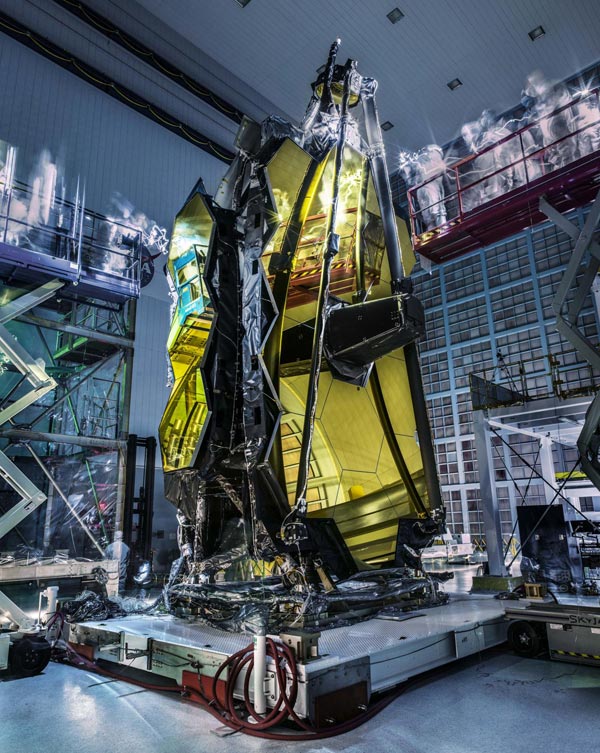

What happens when the lights are turned out in the enormous clean room that currently houses NASA's James Webb Space Telescope? The technicians who are inspecting the telescope and its expansive golden mirrors look like ghostly wraiths in this image as they conduct a 'lights out inspection' in the Spacecraft Systems Development and Integration Facility (SSDIF) at NASA's Goddard Space Flight Center in Greenbelt, Maryland.
Image Credit: NASA/Chris Gunn
The technicians who are inspecting the telescope and its expansive golden mirrors look like ghostly wraiths in this image as they conduct a “lights out inspection” in the Spacecraft Systems Development and Integration Facility (SSDIF) at NASA's Goddard Space Flight Center in Greenbelt, Maryland.
The clean room lights were turned off to inspect the telescope after it experienced vibration and acoustic testing. The contamination control engineer used a bright flashlight and special ultraviolet flashlights to inspect for contamination because it's easier to find in the dark.
NASA photographer Chris Gunn said “The people have a ghostly appearance because it's a long exposure.” He left the camera's shutter open for a longer than normal time so the movement of the technicians appear as a blur. He also used a special light “painting” technique to light up the primary mirror.
###
The James Webb Space Telescope is the scientific successor to NASA's Hubble Space Telescope. It will be the most powerful space telescope ever built. Webb is an international project led by NASA with its partners, ESA (European Space Agency) and the Canadian Space Agency.
For more information about the Webb telescope visit: http://www.
Image Credit: NASA/Chris Gunn
Text: NASA/Rob Gutro












